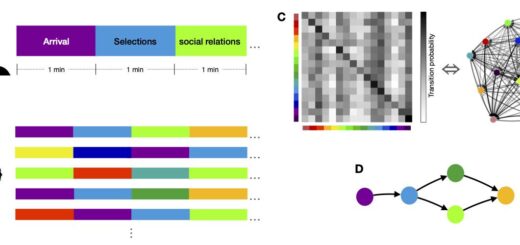Tuesday 27 October 2015 – Melodee Beals – Boutique Big Data: Reintegrating Close and Distant Reading of 19th-Century Newspapers
Slide Show
Forthcoming
Abstract
From their earliest incarnations in the seventeenth-century, through their Georgian expansion into provincial and colonial markets and culminating in their late-Victorian transformation into New Journalism, British newspapers have relied upon scissors-and-paste journalism to meet consumer demands for the latest political intelligence and diverting content. Although this practice, wherein one newspaper extracted or wholly duplicated content from another, is well known to scholars of the periodical press, in-depth analysis of the process is hindered by the lack of formal records relating to the reprinting process. Although anecdotes abound, attributions were rarely and inconsistently given and, with no legal requirement to recompense the original author, formal records of where material was obtained were unnecessary. Even if they had existed, the number of titles that relied upon reprinted material makes systematic analysis impossible; for many periodicals, only a few issues, let alone business records, survive.
However, mass digitisation of these periodicals, in both photographic and machine-readable form, offers historians a new opportunity to rediscover the mechanics of nineteenth-century reprinting. By undertaking multi-modal and multi-scale analyses of digitised periodicals, we can begin to reconstruct the precise journeys these texts took from their first appearance to their multiple ends. Moreover, by repurposing individual ‘boutique’ research outputs within large-scale textual analyses, we can greatly enhance the resolution of our computer-aided conclusions and bridge the gaps between commercial, state and private databases.
This paper will explore the possibilities of large-scale reprint identification, using out-of-the-box and project-specific software, within and across digitised collections. Second, it will demonstrate the means by which reprint directionality and branching can be achieved and the relative precision of manual and computer-aided techniques. Finally, it will explore the nature of multi-scale analysis and how we might best reintegrate ‘boutique’ periodical research into large-scale text-mining projects.
Melodee Beals is a Lecturer of History at Loughborough University
Convenor’s Response: Listening from the Backchannel
By Adam Crymble
28 October 2015
You never know who’s listening. Last night, Melodee Beals’ seminar was live-broadcast to the world. It’s something we’ve always done at the IHR Digital History seminar. We recognise that we in London are privileged with a critical mass of digital humanities scholars interested in common themes and challenges. For us, we’re able to come together in person and discuss ideas over a warm beer or some fish and chips. For so many other digital humanities scholars or subject specialists interested in our seminars, that’s just not an option. They may live on the other side of the world, or, like many scholars, may be the only person within hundreds of miles that share their research interests. So our live broadcasting is our attempt to extend our physical community into the much more substantial Imagined Community.
It’s always a bit strange for those of us in the room. We never know who’s listening. The speaker doesn’t even know if anyone is listening. If you’re not used to it, speaking into the wind is an odd experience. But sometimes it pays off.
Last night, Melodee was discussing her attempts to work with digitised newspapers to identify when and in which contexts publishers were stealing – borrowing – content from competing publications. In our discussions we considered whether or not this was effectively the ‘re-tweeting’ of the nineteenth century, bringing a new audience to an often important story. Our discussion also considered the nature of the digital sources themselves and the challenges of working with digitised newspapers, which are very often controlled by commercial publishers.
Those commercial publishers have done wonderful things in democratising access (for a fee) to materials that used to exist in physical form only. That has meant an explosion of use of digitised newspapers by scholars around the world. Their benefit has been felt most strongly by scholars who live physically distant from the original archival materials. But the format most of these digital publishers have opted to provide that access in privileges the careful reading or browsing of individual pages rather than large-scale analysis. Text mining of the sort Melodee spoke of in her presentation last night (see the video to watch), has been largely impossible unless you know the right people.
I think it’s fair to say that as a result of those limits on access, the relationship between commercial publishers who need to stay in business and digital humanities scholars who want to push the boundaries of knowledge, has been one of frustration. Both sides are constantly seeking to negotiate their relationship to strike a balance between what they’d like to do and what they feel they can do.
In a situation like that, it’s always wonderful when the other side reaches out, and we at the IHR digital history seminar are pleased to hear that’s exactly what happened this morning. Apparently one of our anonymous listeners of the live broadcast last night was a member of one of the major commercial publishers of digital newspapers, and they decided to get in touch with Melodee to see if there are ways that they can work together to achieve their mutual goals.
We wouldn’t want to jeopardise that early conversation, so we’ll let them remain anonymous, but we at the IHR Digital History seminar are delighted to hear this contact has been made. And it just goes to show, that you never know who’s listening.
